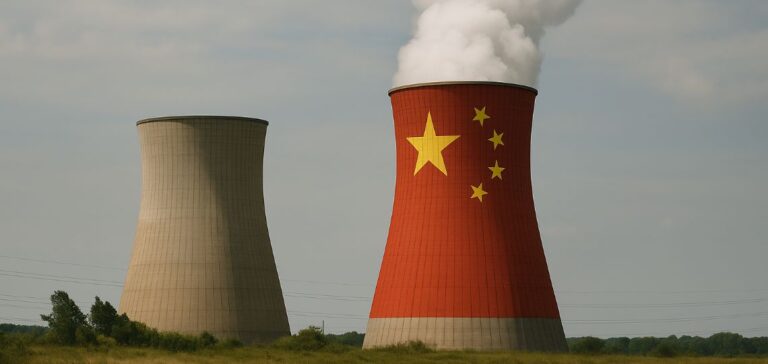China has once again reinforced its national nuclear fleet with the official approval of ten new reactors distributed across five key locations. This decision, announced by the Chinese State Council, comes within a context of sustained growth in China’s nuclear sector, already one of the most dynamic globally. This investment wave underscores the significance China places on nuclear energy production to meet its escalating industrial demands. It also marks a critical step towards Beijing’s national goal of gradually reducing dependency on fossil fuel sources.
Strategic distribution of new projects
The ten approved reactors will be located at Fangchenggang, Taishan, Sanmen, Haiyang, and Xiapu. The Fangchenggang site, situated in Guangxi, will host units 5 and 6, while Taishan in Guangdong will see the construction of reactors 3 and 4. Sanmen in Zhejiang and Haiyang in Shandong will each welcome units 5 and 6. Finally, Xiapu, in Fujian province, will initiate its first two reactors, marking this region’s entry into China’s national nuclear program.
The majority of these projects will utilize the Hualong One (HPR1000) technology, a domestically developed third-generation nuclear reactor model. Each HPR1000 unit has an estimated annual production capacity of approximately 10 billion kilowatt-hours, potentially covering the annual energy requirements of nearly one million inhabitants. The remaining two reactors will adopt CAP1000 technology, a localized Chinese adaptation of the American AP1000 model, thereby confirming China’s strategic diversification in nuclear technologies.
An unprecedented context of growth and investment
This series of approvals occurs in an environment where China overwhelmingly leads global nuclear investments, representing nearly half of all reactors currently under construction worldwide. The country thus pursues ambitious targets, aiming for 65 gigawatts of installed nuclear capacity by the end of 2025, compared to less than 60 gigawatts recorded thus far. This acceleration reaffirms Chinese authorities’ firm commitment to efficiently addressing an ever-growing electricity demand driven by economic and industrial growth.
The current pace of approval significantly exceeds recent years, marking a notable intensification of China’s efforts in the nuclear sector. Since 2022, the State Council has approved over 30 new nuclear reactors, underscoring the strategic importance of nuclear energy in China’s long-term economic development plans. Industry analysts predict this momentum will continue intensifying in the upcoming years.
Towards a reshaping of global energy balances
With these new infrastructures, China confirms its intention to sustainably transform the structure of its national energy mix. The rapid expansion of China’s nuclear fleet could directly influence global markets, notably affecting Chinese demand for imported fossil fuels. The potential economic impact of this strategy is closely observed by key players in the global energy market, both in supply chains and international trade balances.
This announcement occurs amid ongoing global energy market tensions, notably due to commodity price volatility. Consequently, China’s evolving energy choices continue to attract the attention of international investors and may significantly influence global economic dynamics in the years ahead.






















